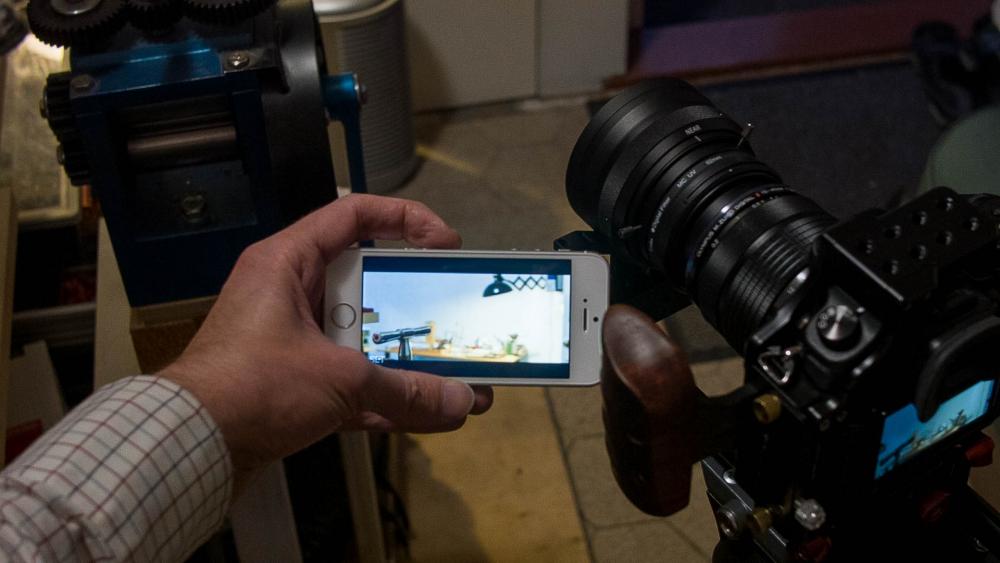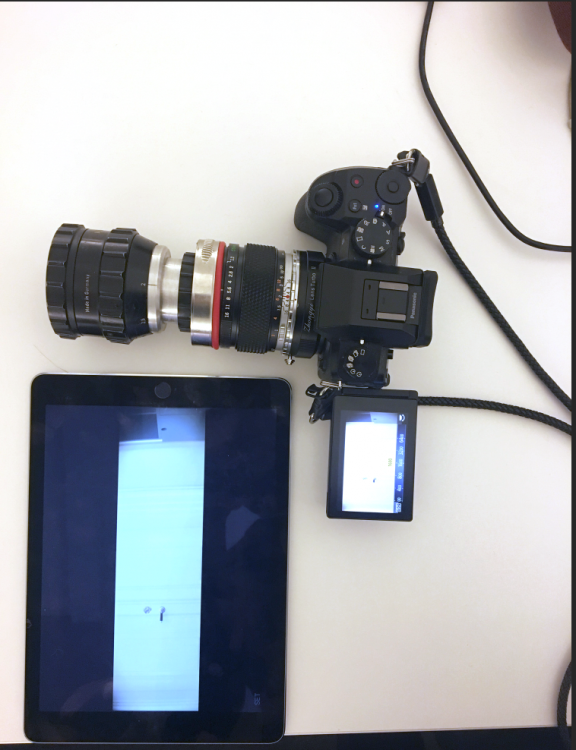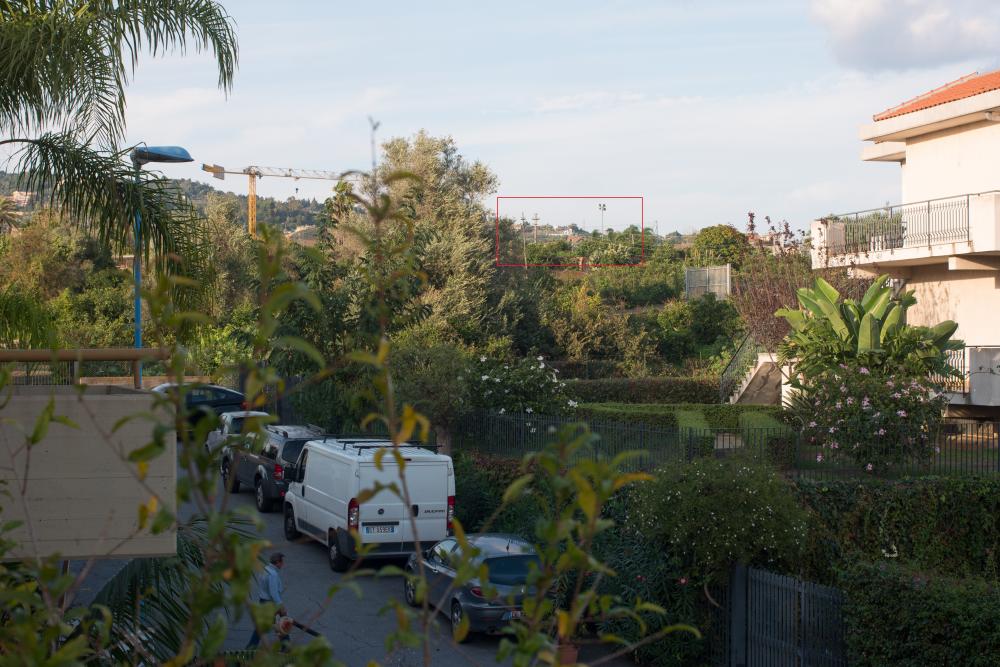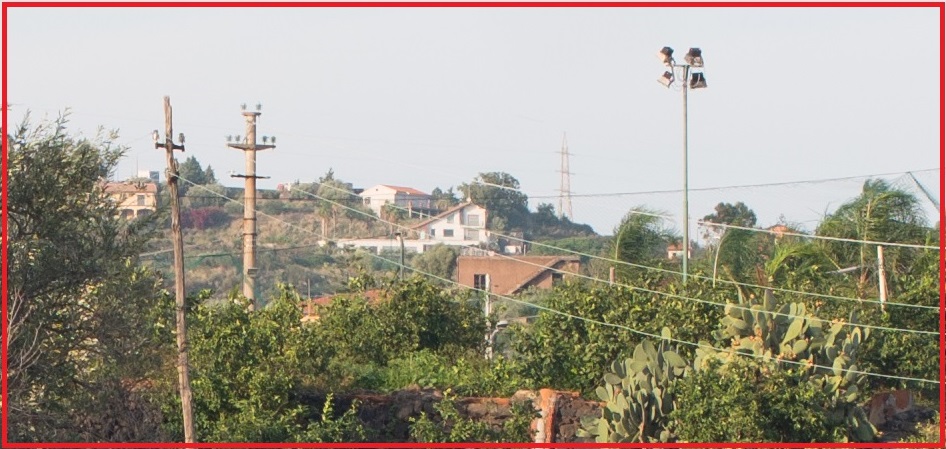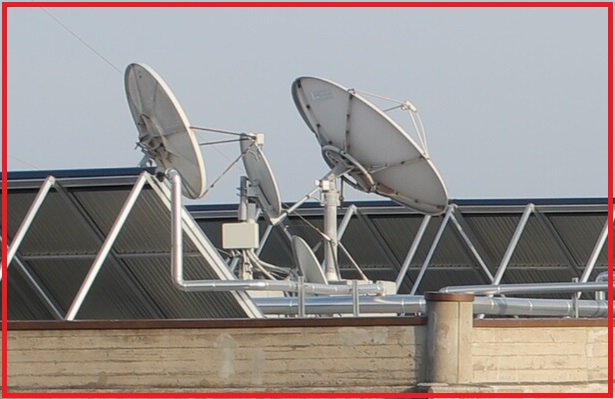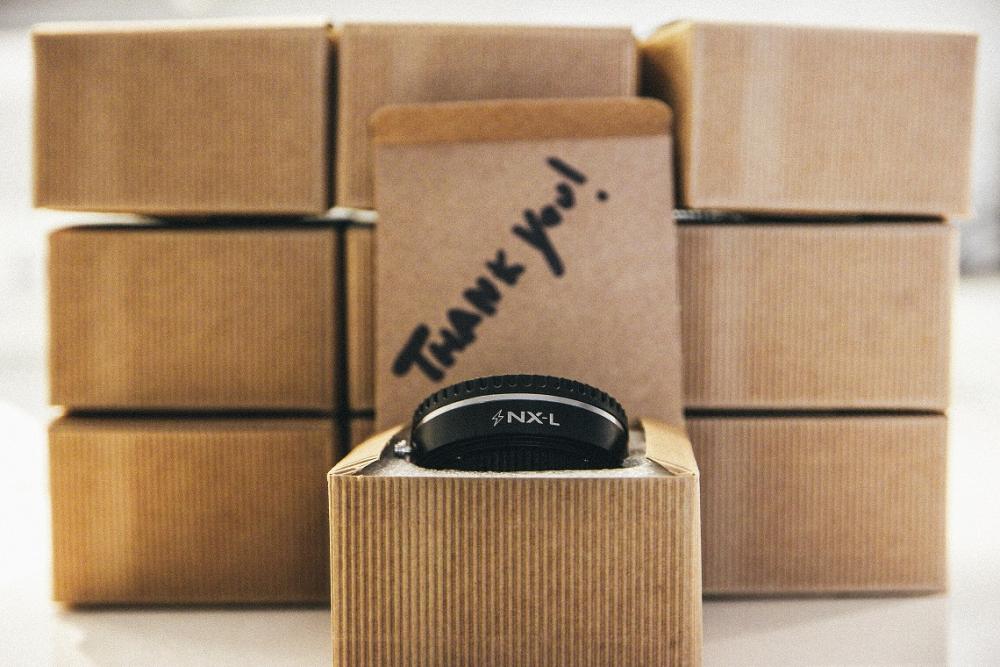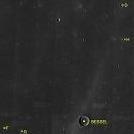Leaderboard
Popular Content
Showing content with the highest reputation on 11/06/2016 in all areas
-
Finally finished the recap of 3 weeks of backpacking in Peru! Lessons learned: Dont just bring a MF only lens with you, I had discard too many shots that would have been great, yet where out of focus. Next to 1, dont just bring a 25mm lens with you, especially for landscape this does not cut it. Next time I will buy a (ultra) wide zoom, this will give me much more possibilities. Maybe the Sigma 18-35, will see... And dont forget your sun hood9 points
-
pw: omega shot in Photo Raw 15 fps(50 frames), graded in AE, export in 25p and Twixtored in Premiere 50%3 points
-
Premiere alternatives for FCPx/Mac user looking at Surface Pro4 for mobile workstation
Trek of Joy and 2 others reacted to DPC for a topic
Resolve Lite perhaps? Is your 13" MBP Retina really too heavy?Why would the lack of a retina screen on the MBA be a deal breaker? Just curious...3 points -

What to get for initial Lighting setup?
mercer and 2 others reacted to TheRenaissanceMan for a topic
I just struggled a bit with this very issue, and here's what I ended up doing. I started with a couple used Mole Richardson 1K fresnels. I got each for about $150 off eBay, used in good condition. Beautiful lights, very robust, and easy to control. They're my bread and butter--I use them on everything. Next, I hopped over to Home Depot and picked up some dirt cheap clamp lights. Fitted with some high-wattage incandecent bulbs, they're great for accents, hairlights, background splashes, etc. Next thing on the list (should be coming this week) are a few ETC Source Four Pars. $70 each shipped, again used. These are 575W tungsten fixtures, but the design of the bulb makes them about the same output as a 1000W open face. These are great for bouncing or pushing through diffusion if you just need raw output, but they also come with 4 lenses: wide flood, medium flood, narrow spot, and very narrow spot. These attachments don't produce the same quality as a fresnel, but they're usable as direct light and easier to control than a redhead. I've used them on a few sets for background punch, kickers, and even as an effect spot for a dream sequence, and they're surprisingly versatile. You can even pick up 3rd party barn doors for $15 or so. Dollars per lumen, S4 Pars are unbeatable. As soon as I sell off a few more things, I'm picking up a couple Aputure Amaran 672S LED panels. Excellent CRI, dimmable, run on batteries or AC, remote operable, and easy to diffuse (if necessary) with the built-in umbrella mount or Aputure's softbox attachment. I'm debating going with the Ws instead, as I already have enough hard lights, and maybe a variable color temp version, but we'll see how things pan out once I'm actually ready to buy. Last item on my wishlist is a Lowel Rifa. I admit, this one is a luxury item; it's essentially a big tungsten softbox, but what makes it cool is that you can have it out of the bag and set up in maybe 20 seconds because of the slick way it collapses and expands. Great for motivating interior lights, as a dramatic toplight, beauty light, or anything else you'd use a big soft source for. Some of the newer Rifas even have a system where you can replace the tungsten fixture with three florescents, lowering your power consumption and giving you the option of daylight balance. Very nice. You can find used ones missing the front diffusion sheet for reasonable prices, then just replace the front for $20 or so. Just remember, don't skimp on light modifiers, stands, and flags. Go back to Home Depot and find those big 4x8 ft. pieces of styrofoam insulation--white on one side, silver on the other, 1" thick--cut them in quarters (halves if you have the space), and wrap the edges with gaff tape. Bingo bango, you've got some pretty dope bounce boards! If you're using fresnels, grab some used scrims off the 'Bay. They're a little pricier than dimmers, but they won't mess with your color temp when you need to knock down your output. Buy some basic Lee Gels (get these new) in all the essential flavors: CTB, CTO, Straw, Diffusion, ND. They sell a combo pack of 1'x1' gels that include all these, as well as more exotic stuff and some fun colors (primary red is a personal favorite). Grab a bag of clothespins to hold them on your barndoors, and 1" pony clamps for anything else that needs securing. Grab some blackout fabric (duvetyne) for negative fill and controlling spill. Extension cords seem like a "duh" item, but you'd be amazed how many beginners forget about them. You can't be loading 4000 watts of light onto one circuit, so keep enough of these around to run power everywhere you need it. Lastly, some black wrap (I use Rosco Cinefoil) is great for any time you need to shape a light on the fly. I like to cut mine into big, useful-size pieces so they can be reused from project to project. When it comes to stands, it's hard to cheap out. You simply don't want to trust heavy, expensive, hot lights to a subpar stand. Most brands are great, although my friends speak pretty harshly about Impact. I haven't used enough to confirm or deny. A lot of people like to use C-Stands for their lights, especially the Matthews ones. Personally, I think they're best-used to hold your bounce cards and flag, as the leg design and articulating arm on the top make gripping and positioning modifiers quick and easy. A good one will run you $180-200 retail, although areas with more local filmmaking may have some on the used market for less. In terms of actual light stands, my favorite for the dollar is the Kupo Master Combo HD Stand. It folds up nicely, has both a baby pin and a junior receiver, gives you a leveling leg for uneven surfaces, a solid steel construction, and can hold up to 88 pounds. What a beast! Best of all, they only cost $150 retail. Use these for your fresnels, Rifas, or anything you need to fly high. Don't forget to pick up some sandbags to keep all this from tipping. I have a set by Impact filled with fine gravel from Home Depot (I feel like they should be paying me for this). Lastly, for your C-stands, some Matthews flags are a staple in any grip's kit. It's essentially just a sheet of black fabric on a metal frame with a post on the end for clamping into a c-stand knuckle, but they're invaluable for shaping your light the way you need it. This may seem daunting at first, but the best way to learn is to pick up the basics and start using them. Practice makes perfect, and lighting is no exception. Cheers!3 points -
Rondabout +Anamorphic on G802 points
-

35NAP 2-3M (mod) – precision, light streaks, bokeh
Juank and one other reacted to Dr. Verbel' for a topic
Fresh videos (2016.11.05) Quality closer & closer :-) First video 4K, I have more time to focusing. Second video Full HD. 35NAP 2-4 | Helios 44-2 | Sony A63002 points -
4K compilation, I guess it was not shot with flat profile:2 points
-
Speaking of improvements (didn't feel like opening a whole other thread) and carrying bigger loads, ha, now here's a nifty idea! ~ https://www.kickstarter.com/projects/firstsparkgear/daisho-turn-your-camera-gimbal-into-a-shoulder-rig | http://www.firstsparkgear.com/daisho/ ( via ) Reducing two major problems of handheld (pistol grip/dual handle) stabilizers... all the heavy load on your arms, creating muscle exhaustion and up/down bouncing movement. Not too shabby.2 points
-
I just wanted to share that I've released an iOS app that is kind of like the pana app, but full screen and with some basic image controls; anamorphic de-squeeze (1.33x, 1.5x, 2x) and brightness / contrast / saturation for working with V-Log. Here's the App Store link: http://bit.ly/scopes-ios-app Video showing lag is comparable or better than pana app Scopes app + GH4 + SLR Magic Anamorphot 1.33x Scopes app + G7 + Möller 2x (G7 is not officially supported and needs you to start pana app first) App Store link: http://bit.ly/scopes-ios-app1 point
-

12 or 10-bit RAW Magic Lantern!!!!
Nikkor reacted to hyalinejim for a topic
I don't think it's that bad. Are you referring to the screengrab above, or the DNGs I posted?1 point -
1 point
-
Very nice. Weirdly the word "organic" comes comes to mind for some of these images.. P.S. has anyone here seen Peep Show? Shot at first on a cheap camera that was built into a hard hat I think? Definitely relevant here. All POV shots, which somehow works really well. Certainly helps that the writing and acting is fantastic too though.1 point
-

classic digital
Liam reacted to Matt Kieley for a topic
Let's keep the shitty digital videos coming. https://vimeo.com/13324192 Another one shot with the GS90. Anamorphic HV30. GL2.1 point -
The reason why it is not included could just be as simple as a) it is an old OS & b) BMD is a very small company and doing testing for every possible software/hardware combo takes time and is expensive1 point
-
Some good suggestions in here. I learned a ton from this post. Do you have a Vimeo page? I'd love to see your work.1 point
-
I'm very tempted by these: http://www.newsshooter.com/2016/05/10/nab-2016-spot-lights-on-a-budget-aputure-launch-ls-c20-led-mini-fresnel-for-199-us/ I think these are what I'll order next for my lighting kit, once my next few audio purchases are sorted out.1 point
-
Out now: FCP X 10.3
Davey reacted to Bioskop.Inc for a topic
This whole debate is so funny & it's mind bogling that we are still here talking about it. Back in the day, when FCP7 existed, no one would touch Premiere with a barge pole since it was a pale bad imitation of FCP/Avid (in fact I didn't know Adobe had an NLE & I was working for a big media company) - the 2 main editing NLEs were FCP or Avid (Avid was used for the big money projects). FCP gets re-worked, for the better (so much faster to edit than Avid/FCP7/Premiere) & suddenly Premiere is a great editing NLE - NO IT IS NOT! The only reason small companies jumped ship was because they could now (or should that be, had to) RENT the whole Adobe suite & lets face it the only 2 things worth using are After Effects & Photoshop - Premiere is there, so people use it & not because it somehow suddenly became this great editing platform. Personally, if you can't edit in FCPX then you've got serious problems & the magnetic timeline arguement is a non-arguement (it's brought up by people who've never used FCPX for more than a few minutes). The only complaint I have is the need for 3rd party plug-ins, but if you've got the time you can make your own in Motion (and they tend to be better) - & no one is mentioning how great the new Motion is!1 point -
This. There has been a few discussions over the past year or so about using a surface for editing and I don't remember if there was any resolution on how effective it is... I think @Mat Mayer was researching a Surface for editing. So he may be the guy to ask. I have a 2015 Air and it works pretty good with FCPX. And since you're already used to Final Cut, I'm not sure why you'd want to change and invest in a new editing program. With that being said, I haven't used Vegas, but my friend had it for a little while when he was in between Macs and he really liked it... He thought it was the closest to Final Cut/iMovie.1 point
-
Or another option would be to buy the LX10 when it comes out. In 1080p you will have Dual IS with f1.4 at its widest. @jase Great job!!! You're a talented dude. If I were you, I would consider doing travel videos... I think you could be really successful at it. What music was that? I don't think it's a take on traditional Peruvian music... Is it? If I had to give one criticism, I would suggest using the rhythm of the music to inspire some cuts... Occasionally cutting to the music could be cool and liven the piece in a few places... Just a thought.1 point
-
Maybe, but it's my understanding that it is focus by wire. Nikon cameras focus differently than Canon and since Sigma is a 3rd Party lens company, it isn't beyond the realms of possibility that it would be a slightly different design for different camera manufacturers. Also remember there are no hard stops either. I've never used one, but the Sigma seems to be a fine lens. I just wouldn't expect anywhere near the Voigtlander experience. And honestly for the price of the set up, you could buy a used Voigt 10.5mm and a second camera... It would probably be smaller and lighter too.1 point
-
I have no much knowledge as I am mainly an APS-C shooter (and obviously, the smaller the sensor, the less the ultra wide options), but my impression always was that with Pana 7-14/12-35/35-100 2.8f you are set for everything! I do not know pricing, your lenses, and your style, but the 12-35 is a logical step, being 24-70, with a couple more primes you are perfect. Another option, and maybe greater but more breakthrough-ing is to go ultra wide, 7-14 and another couple of primes. For such a trip usually tele lenses are not that great. What I do is usually wide scenaries/architecture and normal to short tele (around 50-70mm equiv.) for people, action, wide portraits etc. In my system, 16-50 (25-77mm 2-2.8f) is my standard lens for my main camera (NX1) and I have the 12-24(18-37 4f) on my secondary/smaller one (NX500). That works great for A-B work too. The 18-36 Sigma would be 36-72 on m4/3, not wide at all in my book. Everything further from 24 is just not wide enough (that is why I detest the 18mm zooms for most APS-C systems, 30mm are not wide enough for me, 24-26 is much better)! As I said, everything is depending of the style of the video/photo-grapher. I do not know about Olympus lenses as they didn't(don't?) had IS, so not really great for GH4 I was using back then. Ofcourse there is always the speedbooster option..1 point
-
Very nice trip and video. Very enjoyable and proper editing. Welldone! I really admired the use of your limited means, and the rythm of the edit. 18mm on a croped sensor like this won't be wide at all. All these mountains and epic nature and architecture would be benefited by an ultra wide lens. There are ultra wide to medium options very well suited for these kind of trips.1 point
-
I've been interested in attaching things to the handle but haven't come up with the best way yet. Perhaps something like the Daisho gimbal clamp system mentioned in the other thread by Cinegain or a long plate system or the upcoming two-handle attachment for the Crane. In any case I don't see much reason to get the smaller Crane-M if there's any possible chance in the future you'd ever want to use a larger camera/lens combo on it. FYI with the new "5D" firmware for stabilizing the pitch for heavier lenses, the Crane is now smooth and stable (including pitch which was previously bouncy) in ALL modes with my 70D + Sigma 18-35mm f/1.8 Art! (755g + 811g = 1566g!) You can see before & after in another person's setup.1 point
-

So what ever happened to 1080p?
kidzrevil reacted to hyalinejim for a topic
The XC10's 1080p is quite compressed and has a lot of artifacts. Its 4K downscaled to 1080, however, is lovely and stands up to moderate grading quite well. But of course, the motion ghosting that we've been going on about here a bit lately precludes it as a serious contender for image quality.1 point -

12 or 10-bit RAW Magic Lantern!!!!
mercer reacted to hyalinejim for a topic
Here's a comparison at ISO 100, exposed to protect highlights, 2560x1072 (14 bit gives 28 seconds, 10 bit is continuous) in greyscale crop mode. I lifted the shadows a bit to see into the blacks. 14 bit is top left, 10 bit is bottom right. Try 3 pairs of DNGs here: https://drive.google.com/open?id=0B1exEpCRAfgFNUNVZVRYN0ZkSms I think that 10bit will work really well, as long as there's nothing you need to pull out of the noise floor. Remember that the 2K DCI spec for Cinemascope is 2048x858... which is 80% of the above res. This allows for a significant amount of re-composing / stabilising / downscaling for increased resolution. Interestingly, both types of DNG are the same size in bytes - don't know what's going on there.1 point -
Great stuff, man! Cool footage, fun edit! Nice job on the sound as well, btw. 3:53 timelapse was stunning! Agree with going wide! I had the 25 and 42.5mm with me in NYC. Ended up using the 12-60mm for just about everything. Be careful with that Sigma. It's a beaut, but I wouldn't really use it handheld. Dual IS (2) works like a charm btw when you throw an OIS lens in front. It's like monopod-mode or something (for handheld camerashake, not necessarily replacing a gimbal stabilizer any day soon).1 point
-
Zhiyun Increases Payload 50%, Crane Stabilizer Now Able to Fly 5D Mark III
hyalinejim reacted to lwestfall for a topic
The download finally barely worked! Now to install it and try it out! CP210x_Windows_Drivers.zip Zhiyun_Gimbal_Tools_for_Windows_v1.2.0.zip1 point -
I think the D750 and XC10/15 are up there for 1080p image quality. My pick for colour if you don't need high frame rates is digital bolex with global shutter, otherwise 5D mark iii raw.1 point
-

Samsung NX Speed Booster
SMGJohn reacted to lucabutera for a topic
1 point -
12 or 10-bit RAW Magic Lantern!!!!
Django reacted to Bioskop.Inc for a topic
Just tried it on 60D & get 11/12 seconds in 10bit DR! If you've got a 5D3, this is what you can get: "So i tried 3K 2,35:1 23,975fps- 14 bits - 134 frames -12 bit - 294 frames -10 bit - over 3 minutes recording, didnt check longer 1920x648 (16:9 after stretch) 60 fps -14 bit 308 frames - 10bit 1425 frames 1920x648 50fps seems to be continous in 10 bit. 1920x1080 37fps - 14bit - 239 frames - 10bit - over minute, didnt check longer. highest possible resolution 3584x1320 23,976 10bit - 160 frames (vs 61 with 14bits)."1 point -
1 point
-
I got the Dedos last night. A lady got them for a theater production and had them laying around for quite a while untill she decided to put them online for sale. I had a good fiddle with the set and the way they work beam/flood and light fall or lack thereof made me getting them. Thanks again!1 point
-

So what ever happened to 1080p?
webrunner5 reacted to aldolega for a topic
I find the GH4 1080p to be very good, great even. It's certainly not immaculate- I do occasionally get fine moire- and downscaling the 4K is definitely cleaner and higher-res, so I use that for regular-speed stuff. But I shoot a lot at >30p, probably half of my shots or more, so I use 1080p a lot. The 100mbps is definitely better than the 200mbps, except for extreme motion (deep DOF, subject and camera both moving rapidly), which again is a lot of what I shoot, so I end up using 200mbps quite a bit. But for moderate/normal amounts of motion, the 100mbps is cleaner and higher-res. I agree about the 1080p bitrates being disappointing on the lower-end cams. I want to upgrade/sidegrade my GH4 to a G85, for the better ISO performance and the IBIS, but 28mbps at 1080 is not enough for what I do. So I'm considering adding an external 5" recorder, either a Video Assist or hopefully a Pix-E5. Not entirely sure I want to dick around with HDMI and more batteries, though. The VA is affordable to me, but would only do 1080, which is all I would really need I guess. While the Pix-E5 would be a perfect match framerate/res-wise, but is pretty pricey, and would probably be a bit redundant once I go GH5 next year.1 point -
My impression of Roland equipment is of the highest order. Great price, once again, wish I was living in the States!1 point
-

Ursa mini...is this the end of blackmagic?
omar reacted to John Brawley for a topic
I've had a UM4.6K for nearly a year. It's done many weeks of work on my sets. Most of the images in my twitter feed are of the same body, the very first one I got. I've had another two PL bodies for about 7 months that have also seen a lot of use. The camera can handle on set abuse. My main body has lots of scuff marks, scratches and dings. It's been rigged on a steadicam, Movi, to cars, in my hands, in production mode, in studio and remote locations. It's had extra transmitters, timecode clocks, plugged in, audio connections used, additional on board monitors, UMC's for remote focus.... There are many many sequences now in the last two TV drama series I shot that have Ursa Mini 4.6K shots and no one ever picks them. I managed to rip one helicoil out early on when an overzealous grip overtightened a rig. I lost a lock off screw that controls the tension on the EVF rotation. I've never replaced it, because the tension hasn't needed to be changed ! My cameras boot up, they don't overheat, they don't loose frames, my shots have passed a zillion INTERNATIONAL broadcast tech checks that specifically go looking for things like noise and FPN and image problems. Directors love the shots I can only get with an Ursa Mini 4.6K, so I'm going to keep using it. JB1 point -

Ursa mini...is this the end of blackmagic?
omar reacted to John Brawley for a topic
Can you buy the same sensor that is in the Ursa Mini 4.6K off the shelf and get the same result ? No. You can't. Is it an off the shelf sensor ? No it isn't. Do you keep saying it is ? Yes you do. Do you say stuff like "I think it has something to do with the fact that they source parts and do not manufacture their own circuits and sensors as with RED and the electronics conglomerates" That's your quote...you forgot that you said RED as well didn't you ? :-) Never mind.... So, you're wrong because RED don't do what you claim. Blackmagic DO make their own circuits and like RED, go to a sensor fab company and customise a sensor to their own specs that you can't buy. So do Arri for that matter. So how would you KNOW ? Seriously ? How do you know that it's off the shelf ? If it's only slightly modified, what does that ACTUALLY mean ? Is it the package size ? What EXACTLY is the benchmark for a slight modification ? What is it that was tweaked ? Was it one thing or many ? Did they just put the BM logo on it ? What other products use the same sensor ? Why doesn't someone else buy the same sensor and make a better camera ? I call you out because I've called you out before sir and I'm just cutting to the chase. You're wrong. Have an opinion. Don't post it as fact when you don't know if it's true. That's all I'm asking. JB1 point -
Recently, I have been exploring the pros of using a matte box. I like the idea of dedicated NDs and flags to control glare. But for as simple as a device as a matter box, is there seems to be a huge variance in price. So my questions are as follows: 1. It's a matte box needed at all? 2. Given the huge range in price, what is good enough? 3. Do flags matter in a controlled studio? 4. Are dedicated NDs really that much of an advantage over variable NDs? Feel free to share your knowledge or experience.1 point
-
Flags can be very handy in a studio setup - often much quicker to adjust or attach a flag then get a flag on a stand and position it. If I'm shooting in a setup where there are lots of light sources potentially visible, I stick all the flags on. And keep in mind, just because light isn't hitting the sensor, it can still be hitting the lens (esp, say, a full-frame lens on a small sensor camera). Sometimes you don't even know you're getting some flare until you see the same shot flagged. A variable ND isn't an ND at all - it's two polarizers. So yes, it can jack up a shot pretty badly, particularly skies or expanses of solid color, or long camera moves. And for close ups with skin, it can really deaden the skin. And they can be hard to match from shot to shot. A matte box with a rotating stage is really handy for ND grads and polarizers. You'll stop thinking of a grad as "just for the sky" and use them to, say, knock down a bright sidewalk or wall. And with pola's, it makes it easy to kill (or enhance) reflections. A pola in a rotating stage eats a lot less light than a circular pola, which is 2 stacked polarizers. If you're 100% "run and gun", a matte box could be a hassle (but then, you should be shooting with a camera made for run & gun, with switchable ND and a good EVF and so on). (I see a lot of newbies say their "style" is "run n' gun", when in reality run & gun is a situation). I don't find 4x4's slow me down significantly. If I were shooting an event, I'd use my big "video" camera. Most other situations, you have a few minutes to frame a shot and work out the DOF and exposure you want. I'd say the minimum to look for is 2 stages, at least one rotates - adjustable height; flags that attach securely and can be removed and adjusted without tools; and flags with no open slots at the mount, as you'll get reflections of your FF gears in your footage!1 point






